Primary Arms Optics—A Look into the Future of Reticle Technology
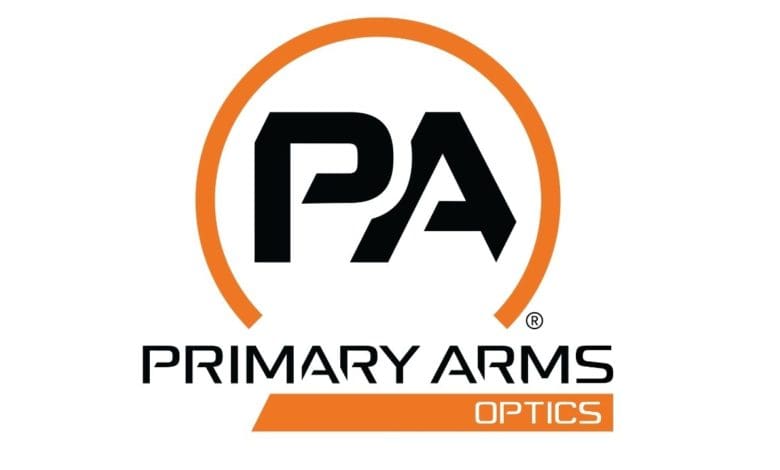
Introduction
Since its founding in 2008, Primary Arms Optics has become renowned for their exclusive line of ACSS® reticles, which feature built-in target ranging and ballistic holdovers. In concept, these reticles allow for a faster, more accurate shots on target, but the truth is a bit more complex.
Over the last few years, Primary Arms Optics has released dozens of new reticles that continually improve on speed, precision, and usability. While these designs function well for general-purpose optics, Primary Arms optimizes each of their reticles for a specific task or function in the shooting world. Even subtle differences in a reticle’s layout can drastically improve the performance of an optic overall—particularly in specialized fields like long-range hunting.
So, just how important are reticles, and what benefits can we expect from all this innovation?
What is ACSS?
The Advanced Combined Sighting System (ACSS®) is a line of high-precision reticles created by esteemed reticle engineer Dimitri Mikroulis. Dimitri’s reticles are exclusive to Primary Arms Optics, and although Primary Arms offers a selection of Duplex and MIL-DOT scopes, many of their mainline rifle scopes feature ACSS reticles.
All ACSS reticles incorporate a mix of tools for improved firing solutions. These tools may include…
- Ballistic Drop Compensation
- Auto-Ranging Stadia
- Wind Holds
- Moving Target Leads
- An Infinitely Precise Center Chevron
Ballistic Drop Compensation
In contrast to MIL-based or MOA-based reticles, Ballistic Drop Compensating (BDC) reticles feature stadia specifically calibrated to your rifle’s barrel length and cartridge. With a BDC reticle, you don’t have to memorize any numbers to shoot beyond 300 yards. ACSS builds your drop holds into the reticle, so if you know the distance to target, you know which numbered stadia to line up on your target.
Most ACSS reticles have BDCs in 100-yard increments, but the ACSS Apollo® line offers 50-yard increments for added granularity in long-range precision shooting. Also, if you prefer metric measurements, the ACSS Aurora® uses meter-based holdovers instead of yard-based.
Auto-Ranging Stadia
One of the leading causes of missed shots is overestimation or underestimation of the target distance. To solve this, ACSS incorporates ‘auto-ranging’ tools, which provide accurate range estimates with little effort.
Auto-ranging is a term that Primary Arms uses to describe stadia that can range the target by width or height. For most ACSS reticles, this comes in the form of a calibrated BDC holdovers or a ranging ladder.
Most ACSS reticles have ballistic holdover stadia that measure 18 inches across at their respective distances, so if you’re shooting at a standard 18-inch silhouette at long distance, you just find the holdover which matches the silhouette’s width. This tells you exactly where you’ll have to hold, so you can take your shot with no additional adjustments.
Many ACSS reticles also feature ranging ladders. These simple brackets can range your target with either a vertical or horizontal measurement. Like the auto-ranging BDC, it’s just a matter or matching your target’s height or width to the ladder and using the range that matches. If you know your target’s approximate size, you’ll have a usable range estimate in seconds with minimal effort.
Wind Holds
As your bullet travels downrange, crosswinds will affect its final trajectory. Just like range estimation, wind estimation is a frequent sore spot for precision shooters, as estimating wind and adjusting are both challenging tasks.
Most ACSS reticles with BDC holdovers will also incorporate built-in wind holds in 5-yard increments. This gives the marksman an immediate, intuitive estimate for drift at their target’s distance—no calculator or DOPE book required.
Moving Target Leads
For targets at close to medium distance, many ACSS reticles feature moving target leads at the sides of the center aiming point.
If you are shooting at a moving target, you can use these leads as a reference for their pace, providing an accurate holdover that compensates for their change in position.
Infinitely Precise Center Chevron
When a reticle uses a full crosshair or a center dot, the reticle inevitably obscures part of the target. This creates some uncertainty in the projectile’s exact point of impact, especially at a distance.
While it may take some practice, the chevron provides a level of certainty that other aiming points cannot achieve. You’ll always know the exact position of your aiming point, which is made even more important when scoping in on a small, precise area of your target.
Hunting with ACSS
Naturally, different reticle layouts will provide different benefits in the field. Most shooters know ACSS for its performance in tactical and long-range precision, but Primary Arms Optics also has reticles that put hunting at the forefront. These reticles feature calibrated ranging tools for North American game, making it easy to choose a reticle that fits your needs.
These Primary Arms Optics reticles that can improve your performance on the hunt…
ACSS Predator Hunting
The ACSS Predator Hunting reticle was designed with coyote and hog hunters in mind. With auto-ranging based on a 10” circle, the Predator allows for incredible speed when ranging and engaging coyotes, pigs, and other similar sized animals. Once ranged, the shot can be taken instantly, as you already have the correct holdover.
ACSS Orion®
ACSS Orion is a hunting-oriented reticle with auto-ranging tools calibrated for use on coyotes, deer, feral hogs, and similar game. By comparing a target to the ranging markers, the user can estimate a travel distance and hold over their target with corresponding ballistic drop stadia. Supplemental wind holds indicate correction for 5mph and 10mph cross winds.
ACSS .22LR
The ACSS 22LR reticle allows users to quickly range and engage common .22LR targets like clay pigeons, cans, and small game all the way out to 200 yards with high precision. Ideal for hunting, target practice, and competition, the ACSS 22LR reticle is effective and easy to use for rimfire marksmen of all ages and skill levels.
ACSS HUD® DMR .308
Tuned specifically for popular .308 Winchester loads, but functional with some .223/5.56 and 6.5 Grendel loads as well, the ACSS HUD DMR .308 reticle offers a remarkable number of advanced features in a clean and intuitive design. Leads for moving targets out to a full 600 yards, wind leads, ranging, and bullet drop out to 1,000 yards, and even a MIL-ranging system are built into the clean design. An illuminated horseshoe and center chevron allow for remarkably fast engagement of close-in targets. At any range, hits are intuitive, with no need for math or digging through data books.
ACSS HUD DMR is one of the most versatile in the line, and while the ranging tools are great for a wide variety of game, they’re equally useful for tactical shooting or long-range precision.
K.I.S.S.®
K.I.S.S. is a simple reticle with a few features adapted from other ACSS reticles, making it ideal for marksmen who favor basic reticles like the Duplex or German post.
The K.I.S.S. reticle features a large chevron that grabs the eye instantly yet provides an infinitely small aiming point without obscuring your target. For shooters looking for a close to medium range reticle that presents a smart sight picture instantly, the K.I.S.S. reticle delivers ultimate speed with no unnecessary baggage.
The Future of Reticles
ACSS reticles show the efficiency that comes with modern shooting and hunting gear. While many firearm technologies are at a plateau, there’s still ample room for simplification and improvement. Rifles like the AR-15 showcase the importance of modularity and ergonomics.
Many marksmen underestimate the importance of the reticle. Yes, lens quality and turret engineering are key considerations, but the reticle is the marksman’s interface, translating the optic’s image into a usable aiming point.
Like any technology, there is a learning curve, but when you make an investment in understanding your gear, you’ll have an easier time achieving your full potential as a sportsman.


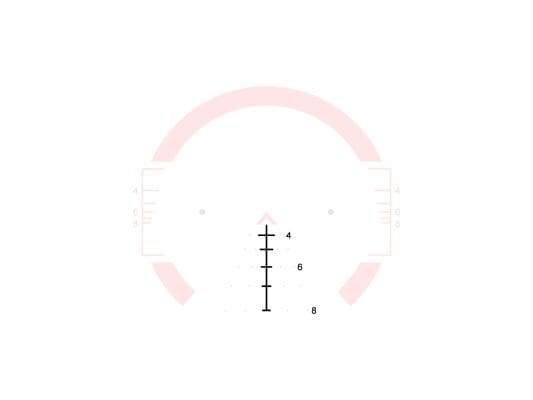
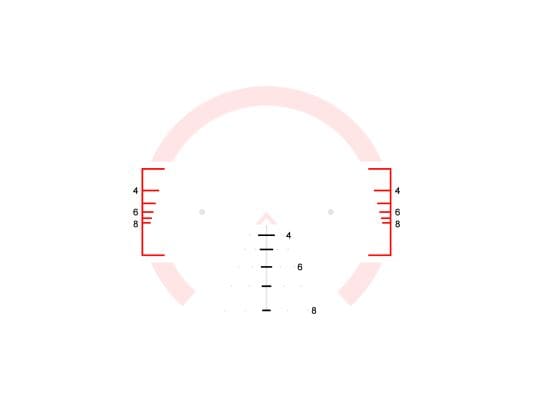




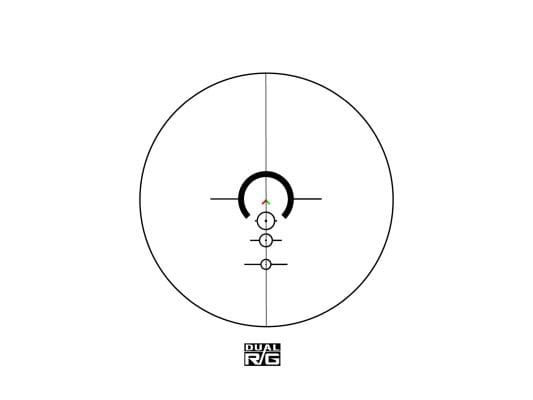
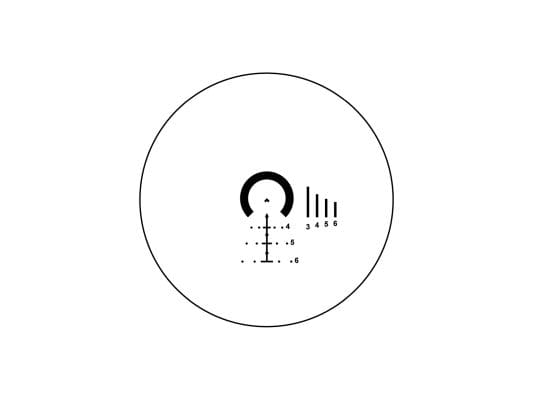
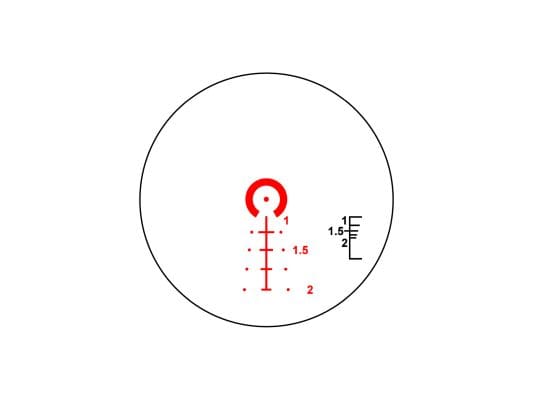
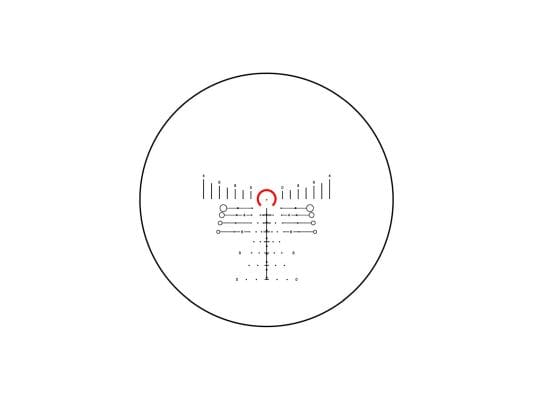
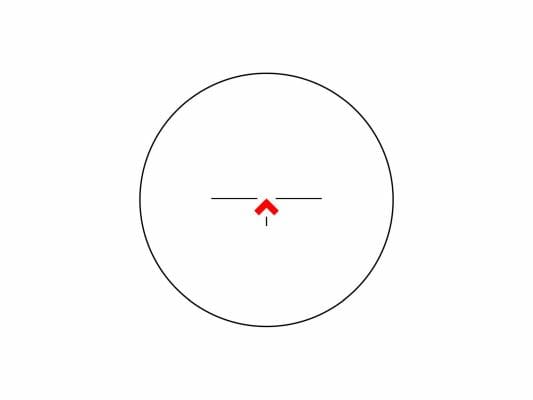
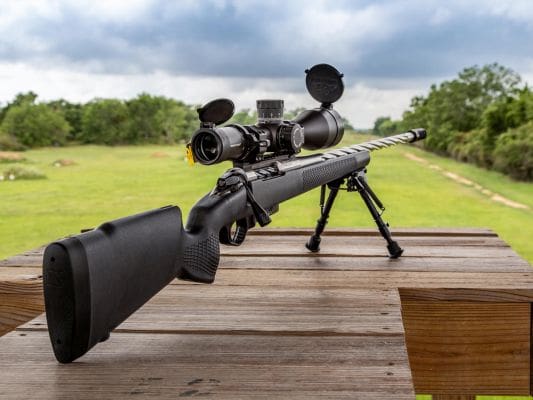
Looks like a nice and simple reticle without without too many bells and whistles.